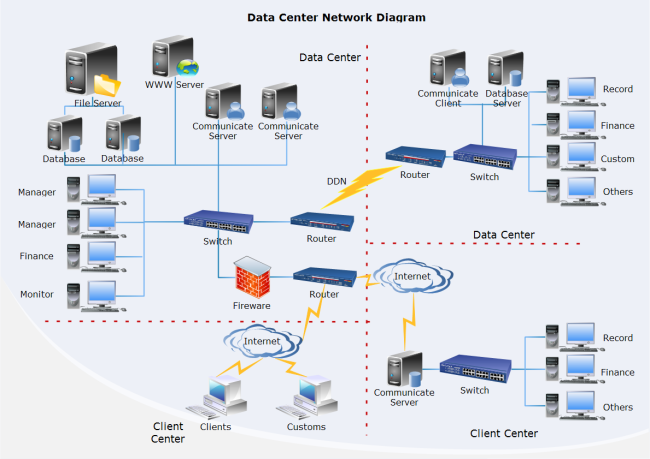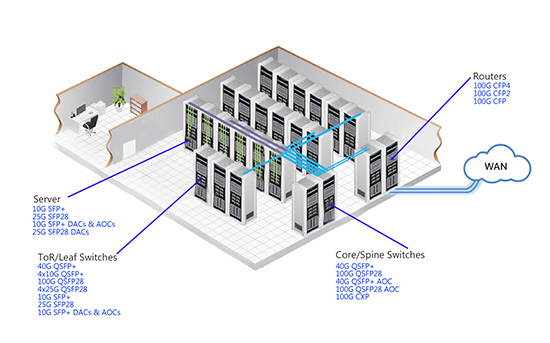Intelligent Data Center Interconnect Technology
In the digital age, where data centers serve as the nerve centers for processing and storing vast amounts of information, the demand for high-speed and reliable communication solutions has never been greater. Fiber optic communication products have emerged as pivotal components in data center architectures, offering unparalleled advantages in speed, bandwidth, and efficiency. This article explores the significance, applications, and future prospects of fiber optic communication products in data centers.

Importance of Fiber Optic Communication Products
Data centers rely heavily on efficient data transmission and connectivity to meet the demands of cloud computing, big data analytics, and real-time applications. Fiber optic communication products play a critical role due to several key advantages:
- High Bandwidth and Low Latency: Fiber optics enable significantly higher bandwidth capabilities compared to traditional copper wires. This high bandwidth is crucial for supporting large-scale data transfers and reducing latency, ensuring swift data processing within data centers.
- Immunity to Electromagnetic Interference: Fiber optics are immune to electromagnetic interference, providing a secure and reliable transmission medium. This resistance helps safeguard sensitive data against potential breaches, enhancing overall data center security.
- Long-distance Transmission: Fiber optic cables can transmit data over long distances without signal degradation, making them ideal for interconnecting data centers across geographically dispersed locations.
- Energy Efficiency: Fiber optic communication products consume less energy compared to copper-based alternatives, contributing to lower operational costs and aligning with sustainability goals.

Applications of Fiber Optic Communication Products in Data Centers
In data center environments, fiber optic communication products are deployed for various critical applications:
- Interconnectivity: Fiber optics connect servers, storage systems, and networking equipment within the data center, facilitating seamless data exchange and resource sharing.
- Backbone Infrastructure: Fiber optic cables serve as the backbone infrastructure for data center networks, supporting high-speed data transfers between different segments of the facility.
- Storage Area Networks (SANs): Fiber channel technology, a specialized form of fiber optic communication, is widely used for SANs to enable fast and reliable storage access across the data center.
- High-Performance Computing: Fiber optics support the high bandwidth requirements of HPC clusters, enabling efficient parallel processing and data-intensive computations.
Recent advancements in fiber optic communication technologies continue to enhance their capabilities and expand their applications in data centers:
Future development trends
Looking ahead, the evolution of fiber optic communication products in data centers is expected to follow several key trends:
- Increased Bandwidth Demands: With the proliferation of IoT, AI, and 5G technologies, data centers will require higher bandwidth capabilities supported by advanced fiber optic solutions.
- Integration with AI and Automation: AI-driven network management and automation will optimize data center operations, enhancing the efficiency and reliability of fiber optic communication networks.
- Enhanced Security Features: Ongoing advancements in encryption and data security protocols will strengthen the integrity and confidentiality of data transmitted via fiber optics.
Fiber optic communication products represent a cornerstone of modern data center infrastructure, offering unmatched speed, reliability, and scalability. As data centers evolve to support increasingly complex and data-intensive applications, fiber optic technologies will continue to play a pivotal role in meeting the growing demands for high-performance connectivity and efficient data management.
